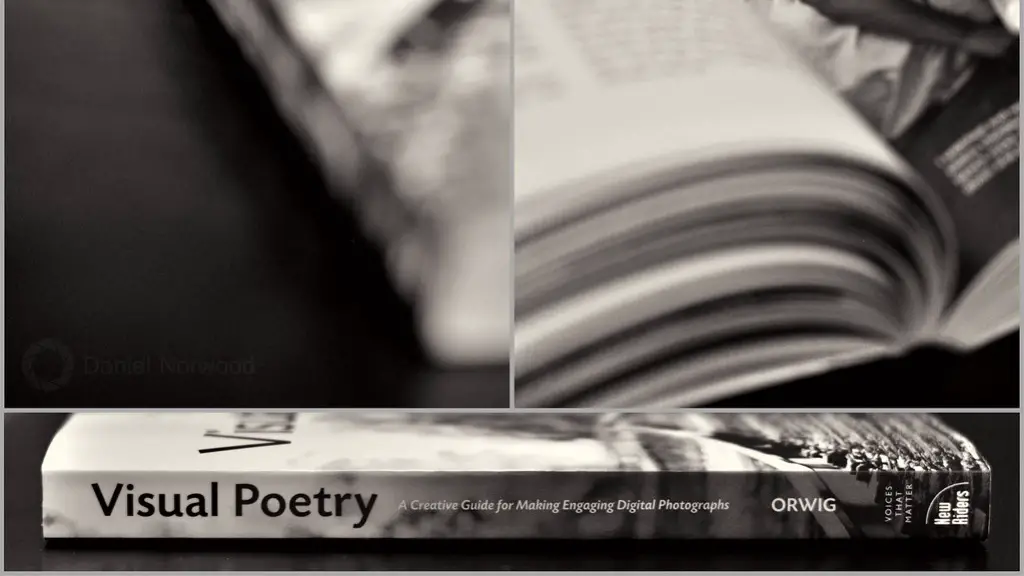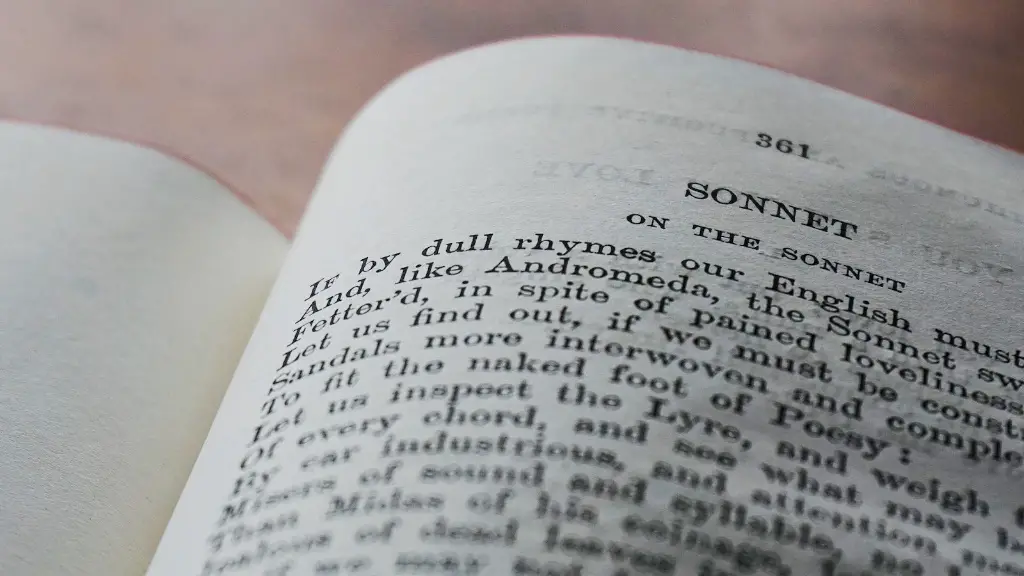Idioms in Poetry
Idioms are expressions that are used to convey specific meanings in a given language. In poetry, these idiomatic expressions serve to give the poem more life and color. They can be used to create vivid imagery or increase the level of emotion being conveyed in the poem. Idioms are not limited to a single language – they can be found in different languages, dialects, and cultures. By using an idiom, poets are able to give their poems a truly personal touch.
Idioms are phrases that are used figuratively to convey an alternative meaning from their literal interpretation. In other words, an idiom doesn’t necessarily mean what it appears to say. For example, if someone were to say “it’s raining cats and dogs,” they don’t literally mean that animals are falling out of the sky. What they are really conveying is that it is raining heavily. As such, idioms can be used to emphasize the feelings and emotions that the poet is conveying.
In poetry, idioms can be used to convey an emotion or to illustrate a point. They can also add a touch of humor to a poem or serve as a way of providing insight into the characters within the poem. For example, if a poet were writing about love, they could use the idiom “love is blind” to demonstrate that when someone’s in love, they often ignore the flaws of the person they are with. Additionally, idioms can be used to emphasize the mood of a poem. For example, a poem about a dark and dreary day might include the idiom “it’s raining cats and dogs” to further emphasize the gloomy atmosphere of the setting.
When using idioms in poetry, it is important to be aware of their cultural and regional implications. Different idioms can have different meanings based on the culture or region they are being used in. Additionally, it is important to make sure the idiom chosen makes sense in the context of the poem. Careful selection of idioms can help to make a poem more engaging and vibrant.
Using idioms in poetry can be a great way to add life to a poem. Whether it is to emphasize the mood of a poem or to illustrate a point, the use of idioms can give the poem a unique touch. By taking the time to select the right idioms to use, poets can create truly memorable poems that will capture the reader’s attention.
Literal Meanings of Idioms in Poetry
When using idioms in poetry, it is important to consider the literal meaning of these expressions. In many cases, an idiom may have a literal meaning that is entirely different from its figurative usage. For example, an idiom like “as cold as ice” may have a literal meaning that implies a person is so cold that their body temperature is equivalent to that of ice. In this situation, the figurative meaning of the idiom is to indicate the person in question is unemotional and stoic.
Understanding the literal meaning of idioms can assist poets in finding more creative uses for them in poetry. For instance, a poet may be able to use “as cold as ice” to highlight the lack of emotion in a particular setting or to depict how two characters are unable to connect due to the chilliness of their surroundings. Knowing the literal meanings of idioms can help poets express even more nuanced messages in their works.
Scientific Idioms in Poetry
Idioms in poetry do not always have to be related to emotions or interpersonal relationships. Idioms can also be used to convey scientific or technical information. For example, the idiom “like two peas in a pod” could be used to depict the similarity between two atoms or molecules. Additionally, the idiom “walk on eggshells” could be used to depict the fragile nature of a particular element or substance. By finding the right idioms for the subject matter, poets can insert scientific or technical details into their poems and still retain the poetic tone.
Idiomatic expressions can also be used to create metaphors within a poem. For example, the idiom “like a fish out of water” could be used to describe a person’s inability to adjust to their new environment. This particular metaphor can be used to emphasize the sense of alienation that a person feels when they are outside of their comfort zone. By using creative metaphors and idioms, a poet can create a rich and vivid narrative within their poem.
Historical Idioms in Poetry
Idioms can also be used to ground a poem in a particular period of time. For example, idioms from Ancient Greece can be used to transport the reader back to a bygone era. Additionally, idioms from the Victorian era can be used to evoke an older era of refinement and class.
By using historically relevant idioms, poets can further immerse their readers within the environment they are describing. Through using such expressions, poets are also able to educate their readers by exposing them to words and terms that may not be common in the present day. This can help to strengthen the bond between poet and reader, as the reader is able to gain insight into the poet’s unique world.
Cross Cultural Idioms in Poetry
Using idioms from different cultures can be a great way to bring a unique perspective to the poem. By using idioms from other countries, poets can paint a vivid picture of the characters or the setting of their poem. This can also add an element of surprise to the poem, as the reader may not expect to encounter unfamiliar words and phrases.
In addition to adding a cultural fascination to the poem, using international idioms can help to promote cultural exchange and understanding between peoples. By introducing cultural elements from other countries into their poem, poets are able to initiate dialogues on topics of cultural exchange and international understanding.
Figurative Idioms in Poetry
In addition to literal and scientific meanings, idioms can also be used to create figurative statements. By using an idiom in a figurative manner, poets can create surreal and dreamlike images in their poems. This can be used to highlight the sense of wonder and awe that the poet is attempting to convey.
For example, the idiom “raining cats and dogs” might be used to illustrate the intensity of a particular emotion. Through this phrase, the reader is able to envision a scene of wild and chaotic intensity, making the emotion much more tangible. Similarly, the idiom “like a fish out of water” might be used to illustrate a character’s sense of alienation from their surroundings. In this way, a poet can generate a vivid and fantastic narrative within their poem.
Humorous Idioms in Poetry
Idioms can also be used to create humorous and lighthearted poems. Such idioms can often be used to provide comedic relief to a poem and to add a sense of levity. By using such idioms, poets can create delightful and entertaining works that can bring joy and laughter to their readers.
For example, a poet might choose to use the idiom “like two peas in a pod” to depict two characters who are exceptionally similar. Through using this idiom, the poet is able to create a lighthearted and humorous depiction of the characters, adding a sense of whimsy to the poem. Additionally, the poet can use the same idiom to create more serious implications, such as depicting how two people are so similar they cannot help but clash with one another.
Conclusion of Idioms in Poetry
Idioms are expressions that are often used to give a poem a more personal touch. When used correctly, idioms can convey a myriad of emotions, thoughts, and messages. Whether it is used to create a tangible image, to illustrate a point, or to evoke a specific feeling, the use of an idiom enables the poet to add a unique flavor to their poem. By selecting relevant and meaningful idioms, poets can create works of art that will capture the attention of their readers.




